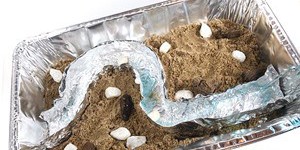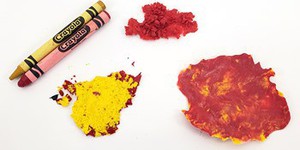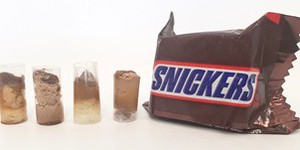Geology Science Experiments (58 results)
Fun science experiments to explore everything from kitchen chemistry to DIY mini drones. Easy to set up and perfect for home or school. Browse the collection and see what you want to try first!
Geologists study the Earth, trying to understand the forces that gradually shape and change the landscape and ocean floor, as well as forces that make themselves felt more suddenly, like earthquakes and volcanoes. The information geologist discover helps in many ways, from keeping populations safe from disasters like landslides to uncovering important ore deposits like titanium used for surgical equipment.
|
Select a resource
Sort by
|
STEM Activity
268 reviews
Scientists study earthquakes so we can understand them better and hopefully one day predict them so we can save thousands of lives. A seismograph is a tool scientists use to record earthquakes and measure their strength. In this activity you will build your own seismograph using simple materials.
Read more
STEM Activity
78 reviews
Earth is a very watery place! More than 70% of the Earth's surface is covered by water. This is due to the many water bodies that can be found everywhere on our planet. What types of water bodies do you know? They are all very distinct from one another in their appearance, size, shape, and movement. In this activity, you will explore the distinct characteristics of a river by creating a river model inside a pan with sand, pebbles, and real water! After that, you can continue to model other…
Read more
STEM Activity
100 reviews
Use crayons to model the rock cycle in this fun activity! You will make colorful sedimentary, metamorphic, and igneous "rocks" from crayon shavings.
Read more
Soil erosion can cost the world billions of dollars every year by washing pollutants into our streams and rivers and by causing the loss of farmland. What can you do about this problem? Help save the world (and some money!) with nothing more than a few plants!
Read more
STEM Activity
34 reviews
Act like a geologist in this fun activity as you drill "core samples" from candy bars using a straw. Can you identify the type of candy bar just from a sample? Try this activity to find out!
Read more
Have you ever stood close to a fossilized T. rex skull and counted its razor-sharp teeth? Or, have you seen a fossilized stegosaurus skeleton and thought about how it defended itself with tail spikes and armored plates? A trip to a natural history museum lets you imagine what dinosaurs looked like and wonder what life with them on Earth was like. Fossils give us information about animals and plants that lived long ago. Certain places around the world contain more fossils than others. Why?…
Read more
STEM Activity
25 reviews
Did you know that more than half of the bottled water sold in America is labeled as “spring water,” but only a fraction of this water naturally flowed from a spring? The FDA allows the sale of groundwater that is sucked up by hydraulic pumps that are installed close to a spring as “spring water.” In the year 2014, this was about six billion gallons of water, a number that increases each year. That is a lot of water! You might wonder how water is stored under the ground,…
Read more
Did you know that soils can be alkaline, neutral, or acidic? Most plants grow best in soil near neutral pH, but some plants prefer slightly acidic and others slightly alkaline soil. What is the pH of the soil in your garden? What happens to the pH of water that comes in contact with soil? In this science project you will get to find out.
Read more
Have you ever heard the expression, "You can't judge a book by its cover"? What do you think that means? That a book with a very plain cover might have a very exciting and interesting story inside? Well, in this geology science project, you'll see if the same expression holds true for a rock, but not just any old rock, a special type of rock called a geode, which looks rather plain and ordinary on the outside, but inside can hold crystals and beautiful colors! You'll discover if the texture or…
Read more
If you have ever prepared a cup of coffee or tea with sugar, you have probably seen that the grains of sugar quickly dissolve and completely disappear in hot water. But sugar is not the only type of solid that can readily dissolve in a liquid. In fact, there are some types of rocks that can be dissolved by common liquids. It might be hard to imagine large, hard rocks being eaten away by some ordinary fluids, right? But it actually happens all the time! In this geology science project, you will…
Read more
|















